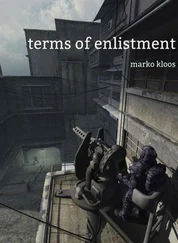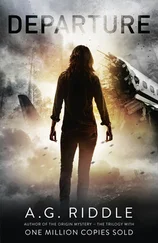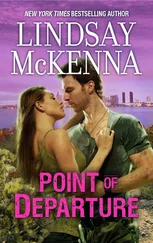Back before I joined the service, I wanted nothing more than a chance to go into space. I had lots of romantic notions of the frontier life out on the colonies, but after half a decade of fighting on the settled planets, I’ve come to the conclusion that most of our terraformed real estate is hardly worth the effort. Two-thirds of our colony planets are just like New Wales—barren, rocky wastelands that will take a few decades of backbreaking work to resemble even the least fertile patch of farmland back on our overtaxed Earth. To top off the futility, we’re not even here to take the place back from the Lankies, because we can’t. Instead, we’re just going to ruin the place for both species, because showing the Lankies that we’re willing to write off the planet altogether rather than letting them have it may discourage them from taking any more of our colonies. It’s a desperate, insane, typically human strategy, but it’s the only option we have right now other than rolling over. We’ve met our first competitors in the interstellar struggle for resources, and they are sweeping us out of the way without breaking a sweat.
———
The main Lanky settlement is fifty miles from the edge of the target zone. It’s nestled into a curved valley between steep granite cliffs. We’ve climbed a tall hill to get a good look at the place, and my computer has already selected the optimal hypocenter and warhead yield to wipe the place out most efficiently.
“They’re getting smart at this,” Lieutenant Graff says. “I mean, look at where they put this town. Granite all around, like a bomb trench.”
“Yeah, I noticed,” I say. “Gotta score a bull’s-eye right in the valley, or the blast wave’ll go over their heads altogether. Pretty smart.”
“Well, they’re a spacefaring species,” Sergeant Humphrey offers. “Dumb creatures don’t build spaceships.”
Lanky towns look a lot like underwater reefs. They don’t build individual houses in tidy rows like we do. Instead, their housing clusters kind of flow together, like vast fields of interconnected starfish. The settlement covering the valley floor below us looks like it grew there naturally. In a way, I almost feel bad for showing the fleet how to destroy it, but then I recall the mission briefing, and remind myself that we lost twelve thousand colonists and a whole reinforced company of Spaceborne Infantry troops when the Lankies came and took the place away from us.
“All the markers are set,” I tell the team. “Let’s find a good spot to ride out the blast, and then I’ll start the clock.”
We study our topographical maps and settle on the reverse slope of a hill three miles to our rear, where the concentration of peripheral Lanky infrastructure is light. According to my computer, the distance will be sufficient to ride out anything less than a fifty-kiloton nuke going off in the valley below, and with the walls of the valley amplifying and reflecting the blast wave, a tenth of that yield will be enough to turn the place into a radioactive rubble field. The nearest atmo exchanger is the one next to our landing site, and that one is more than twenty miles away, more than enough to stay clear of the fifteen kilotons the fleet usually assigns to a Lanky terraformer.
“ Intrepid , Combat Control,” I send on my fleet C3 radio.
“Combat Control, Intrepid ,” the response comes, weakly. The signal is traveling a quarter million kilometers to the waiting Intrepid , and there’s a lot of nasty weather between here and there.
“Flares are lit. We are heading for a safe spot now. Start the clock.”
“Affirmative, Combat. We copy final targeting data. Good luck, and keep your heads down.”
“Will do, Intrepid . Combat out.”
I cut the transmission and switch to the team channel.
“Okay, people. Clock’s ticking. Let’s get to cover and put on those sunglasses.”
———
The worst part of an atomic explosion is the blast. Unlike normal explosives, the pressure wave of a nuke goes back and forth, squeezing solid objects like a giant fist. There’s the fireball, of course, which will vaporize anything in its radius at the moment of detonation, but that is a mathematical constant, easily predicted from the yield of the warhead, and short-lived. The shock wave radiates out from the hypocenter of the explosion, bouncing off mountainsides and flattening everything in its way, squeezing structures into piles of rubble and then blowing them apart. It’s the most violent force we can generate at will, but it’s unpredictable, indiscriminate, and easily deflected by a few hundred feet of hillside.
That doesn’t mean, however, that riding out a nuclear blast behind a hill just five miles from its hypocenter is a fun event.
When the nuke goes off in the valley three miles away, my suit turns all sensor input off to keep me from going blind and deaf. I can still feel the force of the blast, however. The shock wave radiates out from the explosion at the speed of sound, shaking the ground beneath our position a few seconds later. Just like at the beginning of each mission, I always expect a miscalculation at the end, some fleet tech punching in the wrong number after a decimal point, and a ten-kiloton warhead dropping directly in front of my feet instead of the proper aiming point a few klicks away. In that case, I’d die just as quickly as if my pod hit a mine on the way in. I’d simply vaporize before the pain impulse from my suddenly superheated skin reached my already gone brain to inform me of my death.
My dad would get a kick out of the fact that my job involves fleet warships firing atomic warheads at a spot in my general vicinity. He’d say that I finally found a line of work that suits my intelligence level.
We wait out the explosion in our own private armor cocoons, with no sight or sound, until our suits have decided that it’s safe to turn on the sensors again. When my vision returns, the first thing I see is the debris raining down all over the place, irradiated dust and dirt and fragments of Lanky buildings. Without my sensors, I’d be blind in this hurricane of dirt and rocks, and even with all the technology in my suit, I can only see a few hundred meters ahead.
Eventually, the fallout decreases in intensity, and we climb to the top of the hill to observe the target area. As we reach the crest, I see the mushroom cloud of the nuclear detonation rising into the sky just a few kilometers in front of us. It billows and roils like the skin of a living, breathing thing.
“I never get tired of seeing those,” Sergeant Keller says.
“What are you, some sort of adrenaline junkie?” I reply.
“Not really,” he says. “My folks got killed on Willoughby a few years back. Mom, Dad, both my sisters. I’d just joined up, or I woulda been there, too. Far as I’m concerned, every nuke dropped on these things is money well spent. Wish I could unzip this suit and piss on the ashes, too.”
———
The valley is wiped clean. Just as I expected, the force of the surface blast has been amplified by the steep granite walls of the canyon, and the shock wave has bounced through the valley several times. Right in the center of the mile-wide rift, there’s a new crater, a hundred feet deep. We can’t see anything through our optical sensors—the billowing debris cloud making up the base of the atomic mushroom will linger for a while longer yet—but our radar, laser, and ultrasound imagers work in concert to give us a good idea of the devastation we visited on the Lanky settlement.
“ Whoo-ee ,” the lieutenant chirps. “Don’t nobody pop off their helmet to scratch a nose. Radiation level is ‘extra crispy.’”
Читать дальше












